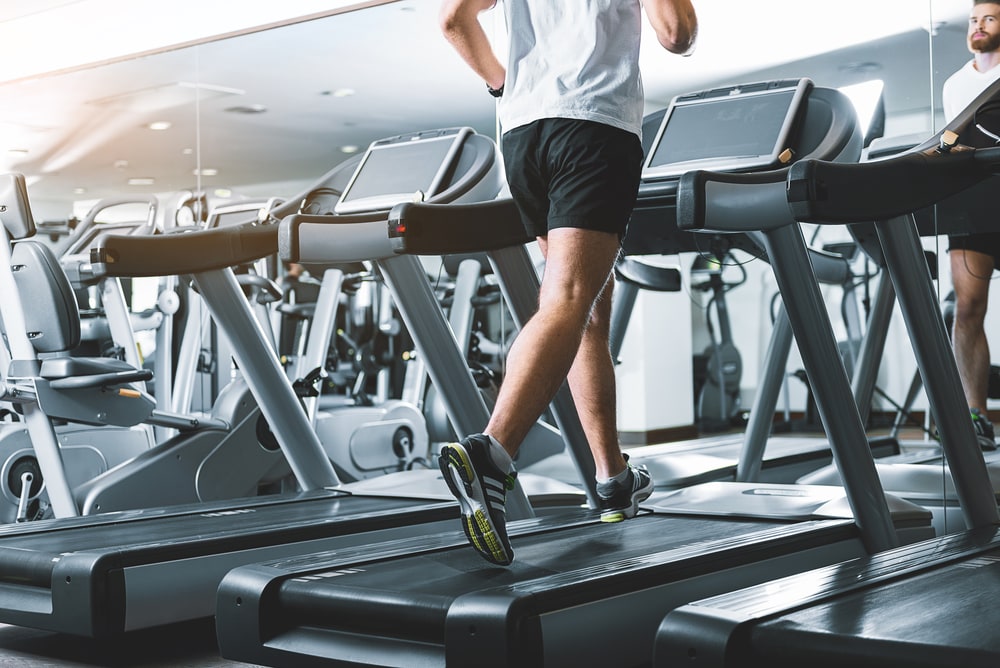
For runners and exercise enthusiasts, there’s nothing quite like going for a steady jog or a brisk run outdoors. With spring nearly here and summer around the corner, runners will be able to leave the treadmill for the outdoors. But, our Long Island orthopedics office specialists urge runners to exercise caution during this transition. Read on to learn how you can prepare your body for the indoor to outdoor running transition without for best results.
Difference Between Running Outdoors vs. Treadmill
Even some experienced runners operate with the belief that running is great, as long as they do it regularly. But, this assumption can be potentially harmful, causing undue pain.
Just as the brisk cold weather can wreak havoc on runners’ knees, different surfaces can have a different effect on the body. As a soft surface, grass is one of the best for running. Asphalt enables runners to run faster and keep a rhythm, but causes immense strain on the body. Cement carries the same disadvantage.
So, putting aside the fact that treadmills keep runners in only one location, the overall experience of running on a treadmill is quite different. Properly transitioning to outdoor running is key. Our Long Island orthopedics office can help runners to make this a smooth and beneficial transition.

How to Transition from Treadmill to Outdoor Running
1. Keep Your Pace Slow (at the beginning)
Running outdoors is, in essence, an entirely different sport than running on a treadmill. And your body treats it as such. In order to make the adjustment properly, you should keep your initial outdoor pace slower than normal. Even if you are a sprinter and prefer anaerobic to aerobic exercise, you should focus these efforts on other activities.
One way to do this is by finishing each run when you still have the energy to run further. This tactic will help your muscles adjust to the impact of concrete, asphalt or grass. Eventually, your body will be conditioned to run further.
While this advice contradicts the mentality of “giving it your all”, you can still apply this spirit in other exercises.

2. Incorporate Walking Breaks
Running outside is not necessarily easier or more difficult than running indoors– but it is different. Because of this, it challenges your muscles in a different manner than the treadmill might. Factor in potentially colder temperatures, wind, and other variables, and outdoor runners have a completely different set of obstacles.
Walking breaks can help outdoor runners to make this transition with ease. Many runners have the mentality that these breaks will lead to a weaker workout ethic, and impede improvement. In reality, though, walking breaks have been shown to have the opposite effect. Depending on the length of your run, taking one or more walking breaks will re-energize your body. In effect, this will allow you to run further, and improve the benefits that your body reaps from the workout. A Long Island orthopedics specialist can help you to further maximize these gains.
3. Hit the Trails
Exploring your neighborhood again can be fun, but it lacks the appeal that the true outdoors have.
More importantly, though, nature trails are easier on your knees, ankles and muscles than asphalt and cement. They will aid in the natural recovery process.
Hitting the trails may carry other obstacles as well. Roots, branches, rocks, and other woodland objects tend to blend into the trails. Be sure to remain alert, and avoid any potential obstacles.
When you are outside of your immediate neighborhood, you’ll want to bring a few items with you. If you can, take a phone, a form of ID, and some cash in case of an emergency.
Better yet, bring a friend!
4. Train for the Transition
Runners who prefer the outdoors know days in advance that they will soon be hitting the great outdoors. So, why not train for it?
In the weeks leading up to springtime, slightly increase the incline of the treadmill. This will simulate the natural incline found in the outdoors. Also, avoiding the handrails will prepare you to use your arms to maintain a steady pace and a positive form.
Furthermore, this transition should be gradual. As you begin to run outdoors more often, start to space out your treadmill workouts. Eventually, your body will be fully adjusted to the outdoors. Improving your agility will help you react to obstacles like branches. When working out other parts of your body, aim to increase your running ability. Hip extensions and other stretches will make for effective cross training. With advice from a Long Island orthopedist, you can make this strategic transition with relative ease.

5. Run on a Predetermined Route
Running wherever the wind takes you makes for an adventure, but not at the beginning of the running season. In the beginning of your outdoor running season, your body and mind will both benefit from a defined route.
The main goal of this tactic is to eventually circle back to your home. With a familiar route, you may even be able to plan bathroom or water breaks.
Remaining in a familiar neighborhood will also give you more options if you experience an injury.
Long Island Orthopedics
Our versatile staff is committed to helping all patients live an active and pain-free lifestyle. As a Long Island orthopedics office, we can provide individualized attention and workout advice. With persistence and attention to detail, we can help you make the most of your running.
